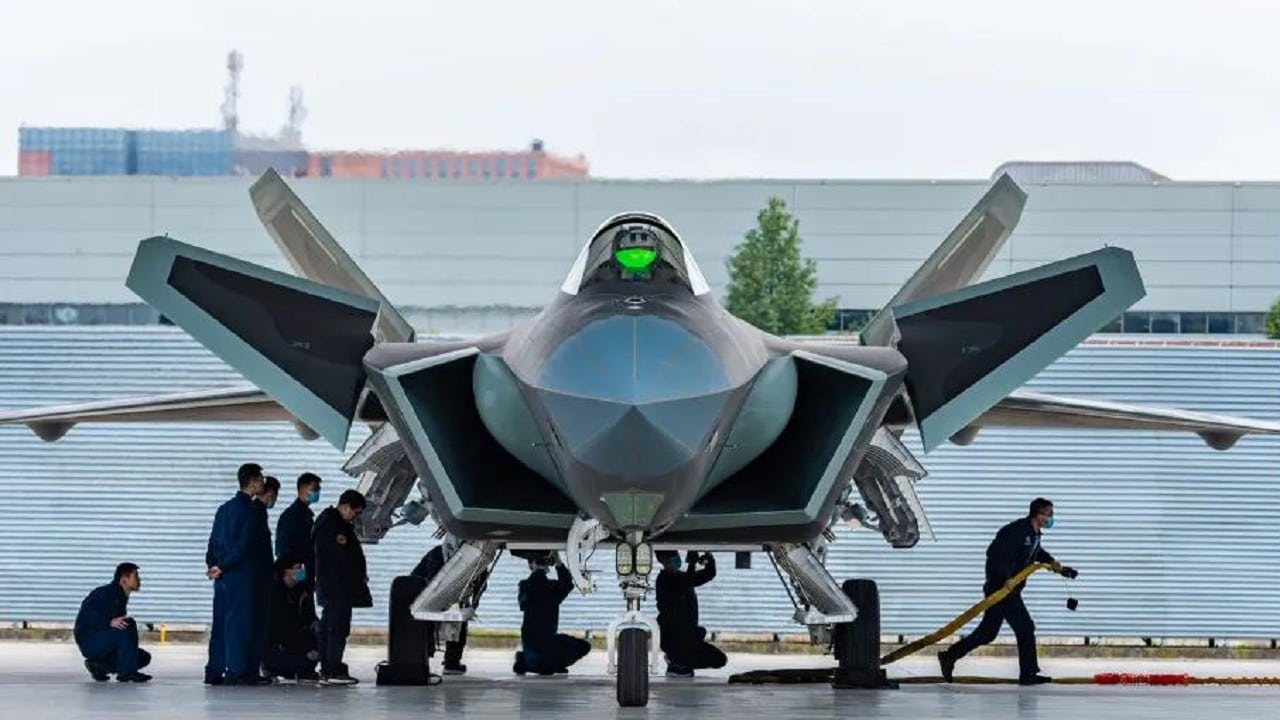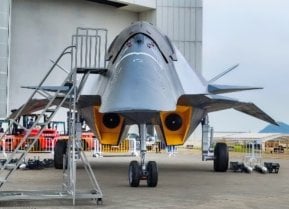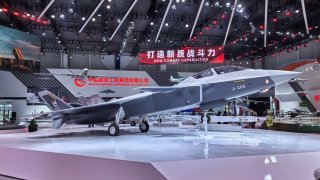China's J-20S Stealth Fighter Explained in Just 4 Words
China has officially unveiled the J-20S, the two-seater variant of its fifth-generation Chengdu J-20 "Mighty Dragon" stealth fighter, marking the first-ever operational two-seater stealth combat aircraft.
Threat to the F-35?: China has officially unveiled the J-20S, the two-seater variant of its fifth-generation Chengdu J-20 "Mighty Dragon" stealth fighter, marking the first-ever operational two-seater stealth combat aircraft.

-Presented at the Zhuhai Airshow, the J-20S is designed for more than training, with envisioned roles including suppression of enemy air defenses (SEAD), electronic warfare (EW), and control of unmanned aerial systems (UAS).
-This development complements recent unveilings of the J-35 and "White Emperor," signaling Beijing's rapid advancement in stealth and sixth-generation capabilities, prompting U.S. allies in the Indo-Pacific to accelerate defense measures.
J-20S Fighter Is Also Out: What Is China Doing?
For the People’s Republic of China (PRC) in general and the People’s Liberation Army Air Force (PLAAF) in particular, the hits just keep on coming, which is a major concern for the United States of America and its allies in the Indo-Pacific region.
Right on the heels of the unveiling of the Shenyang J-35, AKA the FC-31 Gyrfalcon Fifth Generation stealth fighter and the White Emperor (Baidi-B) Sixth Generation fighter. The latter is essentially recognized by the U.S. Air Force as Beijing’s developmental equivalent of the USAF's Next Generation Air Dominance (NGAD) program.
The Chinese defense industry has dropped another, metaphorical, bombshell that ups the ante in the stealth fighter power game: the official unveiling of the J-20S two-seater variant of the Chengdu J-20 Weilong stealth fighter.
The unleashing of the two-headed “Mighty Dragon” took place at the fifteenth biennial China International Aviation and Aerospace Exhibition, referred to as the Zhuhai airshow for brevity due to the event’s location outside the city of Zhuhai in the Guangdong province.
The Latest News
The news comes to us in part from my colleague Peter Suciu in a November 12, 2024 article for The National Interest.
Therein, in turn drawing on reports from the South China Morning Post (SCMP), a quarter of the dual-seaters flew in a diamond formation, followed by radius turns, and a large attack angle ascends. A 1:5 scale model was also put on display at the state-owned Aviation Industry Corp of China (AVIC) booth for attendees to gawk at.
Meanwhile, Stefano D'Urso of The Aviationist points out that although the Zhuhai airshow marks the PRC government’s official declassification of the J-20S, the RUMINT (RUMor INTElligence) on the plane’s development began in 2018, with the first sighting taking place in October 2021, coinciding with a series of taxi tests, followed by the plane’s maiden flight the following month.

The original J-20 was the third fifth Generation fighter to attain operational status, following two American-made warbirds, the F-22 Raptor, and the F-35 Lightning II, both of which are brainchildren of the legendary Lockheed Martin “Skunk Works” division (Russia’s Sukhoi Su-57 “Felon” was a distant fourth, a source of great embarrassment for Vladimir Putin from a propaganda brownie points perspective).
However, the J-20S variant is groundbreaking in both the literal and figurative sense as the first-ever two-seater stealth fighter, thus giving the PRC and the PLAAF major bragging rights.
Moreover, unlike many other two-seater versions of fighter aircraft, the J-20S will not be relegated to mere trainer status but rather will be employed as a true warbird, i.e. an actual combat aircraft, with envisioned roles such as suppression of enemy air defenses (SEAD), electronic warfare (EW), controlling or directing unmanned aerial systems (UAS), and intelligence, surveillance, and reconnaissance (ISR).
Changes to Specifications?
Not surprisingly, exact statistical specifications and vital stats of the J-20S are not available yet. But it can be logically inferred that it will have a higher maximum takeoff weight than its single-seater original if prior examples of two-seater offshoots of original single-seater jet fighters are any indication:
-The F-16C variant of the General Dynamics with Lockheed Martin Fighting Falcon (AKA “Viper”) has a max takeoff weight of 43,300 pounds (19,640 kilograms) compared with 37,500 pounds (16,875 kilograms) for the F-16A, which equates to a 13.3 percent increase.
-The McDonnell Douglas with Boeing F-15E Strike Eagle has a max takeoff weight of 81,000 pounds (36,741 kilograms) compared with 68,000 pounds (30,844 kilograms) for the F-15C, which equates to a sixteen percent increase.

So then, just for argument’s sake, let’s split the difference between those two percentages and extrapolate that the J-20S will have a fifteen percent max takeoff weight than the single-seat version of the “Mighty Dragon;” thusly, we’d be talking about a bump in “Fagin’s” max takeoff weight from 81,571 pounds (37,000 kilograms) to 93,806 pounds (42,549 kilograms).
Meanwhile, Signore D’Urso gives us some insight into the new plane’s likely arsenal, “The J-20S model was displayed beside a model of the J-35A, and both were accompanied by full-size mock-ups of the PL-10E and PL-15E air-to-air missiles. The latter is the most interesting in this case, as it has been optimized for carriage inside weapons bays…The redesigned weapon, which was previously presented as an export variant of the standard PL-15, allows to increase in the internal carriage capability of the J-20 to the current four missiles to six…It is being reported that the weapon is powered by a dual-pulse rocket motor that provides a range of around 150 miles [241.4 kilometers].”
Big Picture Significance on J-20S
This, along with the aforementioned unveilings of the J-35 and “White Emperor,” not to mention China’s Shenyang H-20 6th Generation stealth bomber program, in turn, would presumably create a sense of urgency in the United States to build more F-35s Lightning IIs for its armed forces as well as its regional allies (Japan, South Korea, and Australia are all current foreign military sales [FMS] customers of the Lightning II, whilst Singapore and Taiwan are also being considered as potential), as well as impetus to sustain the Northrop Grumman B-21 Raider sixth Generation bomber program.
And who knows, maybe, just maybe that’ll breathe new life into the financially beleaguered NGAD and U.S. Navy F/A-XX programs’ prospects for survival.
About the Author:
Christian D. Orr is a Senior Defense Editor for National Security Journal (NSJ). He is a former Air Force Security Forces officer, Federal law enforcement officer, and private military contractor (with assignments worked in Iraq, the United Arab Emirates, Kosovo, Japan, Germany, and the Pentagon). Chris holds a B.A. in International Relations from the University of Southern California (USC) and an M.A. in Intelligence Studies (concentration in Terrorism Studies) from American Military University (AMU). He has also been published in The Daily Torch , The Journal of Intelligence and Cyber Security, and Simple Flying. Last but not least, he is a Companion of the Order of the Naval Order of the United States (NOUS).
Image Credit: Main image is from Chinese State Media. All others are Creative Commons.


